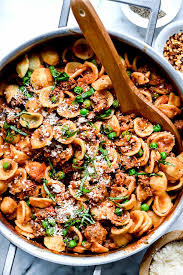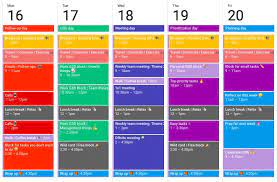Went to the stores, Shop-Rite for serious and large food purchases and then some early browsing for Hanukkah gifts, which I like to have at least selected, if not in hand, by Black Friday. Two very different experiences, resulting in relatively erroneous impressions of how voters might respond to their shopping realities, as voting proceeded while I shopped.
Food has definitely gotten expensive. And for people in retirement like me, counting on our IRAs, their value has headed south while the need to spend some of those funds has moved higher. Shop-Rite issues a weekly newsprint ad that arrives unsolicited in the mail but is duplicated online. I read it, note what is on sale, then create a shopping list from it. Easy. I also try to create menus for the near future from those ingredients, much like the super chefs of Iron Chef had to make the most of the ingredients mandated for them at Kitchen Stadium. Not easy, but both manageable and something of a personal challenge. Shop-Rite puts the items on the front page of their weekly circular right at the entrance to the store, so things go in the cart quickly. Others things notably discounted go at the end of aisles. Experience at navigating their store has a big advantage.
Not all items have inflated in price equally. Produce remains seasonal, despite farming becoming global with fruits and vegetables imported from the Southern Hemisphere whose farming seasons differ from mine. You still have to get the products from there to here, with transportation now more expensive and less reliable. So fruits and vegetables still peak with the seasons, reflected in part in price. Apples approaching season, down tick in price, uptick in menu presence as Thanksgiving approaches. Meat has gotten expensive, even though produced domestically with animals fed things generated on American farms. Kosher meat, my personal exclusive for religious reasons, has limited availability, limited selection, and approaching a prohibitive price. Still I found four chicken breast halves notably reduced. They come in pairs, but easy enough to re-wrap each individually at home and freeze. Makes four shabbos dinners if we eat alone.
Processed foods pose more of a pricing challenge, some explainable, some not so easy to rationalize. I like making lasagna. Noodles on sale, frozen spinach economical, block cheese which I shred about what it usually costs, jarred spaghetti sauce cheap and often on sale. Cottage cheese above budget. Have no explanation why, particularly when its shelf neighbors sour cream and cream cheese remain within acceptable price range, even discounted one brand each week. Butter very expensive. Yogurt with stable price. Cake mixes discounted. Staples of flour and sugar, each requiring factory processing and packaging more expensive than I've ever seen them. Soda eliminated from diet for health reasons but at prices I've not seen before. Yet seltzer, which is flavored rather than sweetened, has shown stability of price across brands. Interestingly, fish has become my go-to protein. Now harvested in bulk and packaged at sea. Sold frozen, keeps forever, just pull a couple of fillets to thaw the day before needed and nature supplies its version of fast food. Per meal price OK, per pound price has stabilized after an acceleration that predated our current food inflation. Cookies, cereals, and other items where the packaging has more nutritional value than the product have exceeded what I am willing to pay, though selected items are always discounted by the store each week. In order to make these, producers create marketing and R & D teams to develop just the right sensory and packaging experience to lure the consumer at maximum price. To do this, they often assemble an ingredient list that is both extensive and global. This makes these products highly susceptible to price and availability fluctuations of individual components and the vagaries of transportation needed to get all this stuff to central factories so that all ingredients are available at the same time for production. These packaged goods prices seem highest of all. I am sort of at the mercy of mini-challots, now about $5 for a package of six, or three shabbos dinners, though I could make my own. Alas, my own attempts at mini-challot have not gone well, and probably not worth the effort for a small savings.
Consumers may divide into two camps. There are people like me, probably a minority, who adapt their diets to price and availability. This may be the human default, as our hunter-gatherer ancestors really had no other option. Changing shopping preferences comes as a challenge. Giving up convenience foods may even generate better health. And then there are people who like their products, will pay what is asked, and maybe find a whipping boy for their displeasure, be it the store or the elected official, neither of whom is truly responsible, though each is accountable. Our food inflation exposes oodles about markets and supply. It also reveals, perhaps, more than we would like about some of us as people and our collective willingness to adapt.
Non-perishable Hanukkah shopping went differently. My list now totals twenty items with a need to stay within budget and to be able to ship items to remote locations. While I judged it premature to purchase, there was no shortage of what I could purchase. As the Eagles are currently undefeated, anything with their logo has inflated, likely based on consumer demand and licensing fees. But grooming supplies, stationery, stuff with a cat logo, apparel accessories, petty edibles like candy, and things to make the kitchen friendlier seem to have avoided the dramatic price increases so obvious at the supermarket.
As I approach Thanksgiving, where food splurges intersect with personal traditions, I probably have only a few perishables to add to food obtained yesterday. I have created the menu and can anticipate the blend of challenge and joy executing it. That same two weeks, and likely a little more, can be diverted to selecting gifts, thinking about the personalities and likes of the four individual recipients, that will enhance their own festivities without undue extravagance on my part.
.jpg)





















